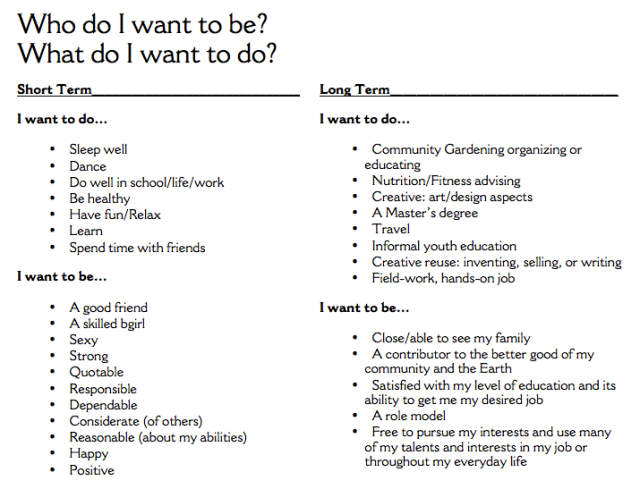I remember the moment so vividly. It was a perfectly clear, cloudless autumn evening in Ithaca, New York. I was walking back from the library wearing a light jacket and a heavy backpack on my shoulders. The air was brisk and fresh. As I took a deep breath, I tilted my head to the starry sky. Looking up at the constellations, I felt limitless and insignificant at the same time. I was exactly where I was supposed to be. I was becoming the person I had always wanted to be.
That’s the feeling I chase. Always.
The person I want to be. I’m always on the path to meet her, and I love the journey.
The feeling is not about reaching your dreams at that very moment. It’s about finally finding or forging the path toward your dreams. It’s not about approval from others. It’s about self-acceptance. It’s a cross between walking the logical path to your goals… and rolling in the grass with serendipity along the way.
I have a preoccupation with self-improvement. I like to think it’s a healthy obsession, if there is such a thing. Being a personal trainer (and studying nutrition policy), I think it’s a great obsession to have, for myself and others. It hasn’t always been so great, though.
A Healthy Obsession
My obsession with self-improvement gets me great results. My recovery from surgery? Couldn’t have done that without my drive for self-improvement. I was 17, a junior in high school, when I had shoulder surgery. My physical therapist taught me exercises and told me to do them 3 times a day, every day until I saw her again. And I did just that. One round of those exercises took me about 30 minutes to complete. So I spent 1.5 each day rehabbing my shoulder. Without being able to practice gymnastics 17 hours a week as I was accustomed to, that time was a small sacrifice for me. After 4 months, I was in the gym swinging bars again. I wrote my college application essay on my shoulder surgery and rehabilitation. The essay (along with my grades) got me into Cornell. To sum it up, my drive for self-improvement definitely gets me where I want to go.

After shoulder surgery, I went on to many more years of club gymnastics at Cornell. And of course breakdancing.
Moral of this story? Do your your physical therapy exercises religiously, or do whatever regimen you need to build the skills and strength to get where you want to be. Forge the path. Write about it… (and it just might get you into your top choice university, too). Take advantage of serendipity.
And… The Not-So Healthy Side of Obsession
What could possibly be bad about self-improvement? I don’t like to dwell too much on negatives, but this side must be addressed. I could say a lot about the plight of the perfectionist, but I’ll make it quick. There’s a difference between enjoying the path to improvement and getting stuck thinking, “I’ll never be good enough.” Not so long after that beautifully satisfying, crisp autumn night, I found myself saying those very words and wasn’t able to regain the person-I-want-to-be feeling until nearly 3 years later. I focused only on what I hadn’t yet accomplished, never rewarding myself or even acknowledging things I had actually done. I did a lot in college. I took too many credits. I got involved with rewarding but time-consuming projects. I stressed. I never relaxed. I forewent the gym to study, eating junk food and punishing myself for craving a break I so desperately needed. I gained 20 pounds over those 3 years, berating myself (“you fattie”) for ever single pound I put on. Going from an almost-too-skinny weight to a still-healthy-but-20-pounds-heavier weight was practically the end of the world for me on my self-improvement scale.

Ok, it’s kind of funny. But it seriously sucks. And yes, I drew this. Also, “mad late”? I clearly went to school in New York.
But it really wasn’t the end of the world, not even close. I know what some of you are thinking. 20 pounds isn’t that much, and I was still a healthy weight. I really don’t have a lot to complain about. (While others are thinking, OMG 20 pounds! I would just die.) The bottom line is I was stressed and I wasn’t happy. I learned a lot in school and life, but it wasn’t a period of abundant health or happiness for me. But I wouldn’t trade this experience for the world. I would never understand weight-gain and weight-loss if I hadn’t gone through it. I wouldn’t understand stress-management if I hadn’t pulled it together and built on my own abilities. I’m a better trainer for this experience. I’m a better student for it. I hope I’m a better person.
Moral of this story? Self-improvement can be taken too far. Balance is key. Remember to look back and acknowledge your successes. Don’t take on too many tasks, and learn how to say no. Don’t forge the path to your dreams too fast or force it in a direction it wasn’t meant to go. Learn from your mistakes, and strengthen your weaknesses. Roll with serendipity, and you’ll like where it takes you.
The Person I Want To Be List
Every year since that shitty time in my life, I make a list. It doesn’t have to be a “New Year’s Resolutions” list for January 1st. It’s just a list to make, revisit, and add-to whenever I feel off-track, straying from the Person I Want To Be. I start by asking myself: Who do I want to be? What do I want to do? It’s a fairly general brainstorm for my state-of-being in my own health, my personal character, and my professional career. It looks like this:

It’s not a perfectly set up or grammatically correct list, and you may not understand it all. It’s for me, not everyone else. That being said, if you don’t know what a bgirl is by now… Urban dictionary is your friend. And sexy isn’t just a way to look. It’s a state of mind 😉
The short and long term bullet points are pretty vague for a reason. First, I’m not one to put labels on things. My dream job doesn’t have a simple title like “doctor” or even just “personal trainer.” And second, these are just a brainstorm or a road map to direct my mind to what it is that I really want from my life.
The specifics are next! After I make my long and short term “I want to do” and “I want to be” brainstorm, I identify specific goals to become the person I want to be. Here was the beginning of my specific goal list for last year, 2013:
 Did I achieve that first goal? You bet! I set the broad, longer term goal: going to Tufts. I set smaller checkpoints that I needed to do go complete that goal. In 2012, some of my goals to go to grad school included taking the GRE, sending out requests for letters of recommendation, and volunteering. For 2013, all I needed was to finalize my statement of purpose and application and continue to volunteer.
Did I achieve that first goal? You bet! I set the broad, longer term goal: going to Tufts. I set smaller checkpoints that I needed to do go complete that goal. In 2012, some of my goals to go to grad school included taking the GRE, sending out requests for letters of recommendation, and volunteering. For 2013, all I needed was to finalize my statement of purpose and application and continue to volunteer.
This was the first year I added a time frame into my goals, and it really helped. Not everything has a mandatory deadline like my Tufts application, but you can set your own start and end dates. If the goal has an ongoing weekly, bi-weekly, or tri-weekly deadline, like going to the gym 3 times a week, write it down and set a start date! Be realistic. If you barely have an hour to spare from your week, yet you’re promising to cook meals at home 3 times a week and add 3 cardio sessions to your weekly routine… take a step back. Remember to budget your time and your sanity. Balance the Chaos. Don’t pile it on. You’ve got a whole year to work towards achieving these goals, don’t even feel like you have to start it all in January.
Make your goals SMART. I’m going to refer you back to my very first blog post if you don’t know what that stands for.
- In the first column, the “goals to become the person I have always wanted to be” are the broad or longer term goals (Specific and Attainable).
- The second column, “what can I do to become the person I have always wanted to be,” consists of the short and medium term goals (Even more Specific, as well as Measurable and Relevant to the longer term goals). These are the measurable stepping stones to reach the broad, longer term goal.
- The third column of “due dates” contains the time frame (Temporal). There, you’ve got your SMART goals.
Here’s some other examples from my 2013 list.
 Last year when I was living in NYC, being patient while rushing everywhere all the time was tough. Even living in Boston, looking up from my Smartphone is still something to remind myself daily. As for travel, I went to California this summer. Check the boxes! And to organize, I went on a mini shopping spree at The Container Store. I bet they make so much money around New Year’s…
Last year when I was living in NYC, being patient while rushing everywhere all the time was tough. Even living in Boston, looking up from my Smartphone is still something to remind myself daily. As for travel, I went to California this summer. Check the boxes! And to organize, I went on a mini shopping spree at The Container Store. I bet they make so much money around New Year’s…
 This is probably one of my favorite goals for myself because it’s so useful in every aspect of my life. It’s been an on-going goal since as long as I can remember. Hence, there is no time frame, but it’s pretty much a daily thing. I may sometimes have the words and the knowledge to be quotable, but I’m no FLOTUS. Studying for the GRE helped me out quite a bit with vocabulary.
This is probably one of my favorite goals for myself because it’s so useful in every aspect of my life. It’s been an on-going goal since as long as I can remember. Hence, there is no time frame, but it’s pretty much a daily thing. I may sometimes have the words and the knowledge to be quotable, but I’m no FLOTUS. Studying for the GRE helped me out quite a bit with vocabulary.
Striking a Balance
To make self-improvement a healthy obsession, you need to frame it within a healthy mindset. I’m going to say it again: Balance the Chaos.
First, make your Person I Want To Be list.
Then, recognize the healthy goals and separate those from the unhealthy, unrealistic expectations you have for yourself. Discuss your goals with your friends, family, or significant other. If you’re too embarrassed to share them, think long and hard about why that is. Are your friends and family too harsh? Or is it your own goal that’s too harsh? No goal is too silly if you really want it, so push that thought out of your mind right now. Find someone who is understanding and balanced to talk to about your goals. Let them help you to re-frame them in a healthy, reasonable mindset.
Once you’ve nearly finalized your list, look it over one more time to see if any one thing stands out to you. Maybe it’s been on your New Year’s Resolutions list for the past 2 years or more, and you still haven’t made any progress. Maybe it seems embarrassing to talk to anyone about. Maybe it’s a huge undertaking or a very extreme turnaround for you. I’m going to say this in the nicest possible way… You probably need professional help. And that’s not a bad thing. Whether it’s a physical therapist, personal trainer, psychologist, career counselor, dance teacher, art teacher, speech therapist, lawyer, financial advisor, interior decorator, or whatever else… You need a professional to teach you how to do it because after 2 or more years, you haven’t been able to teach or motivate yourself. Why wait another year? Invest in yourself.

For example, if you’re willing to invest in a gym membership, a personal trainer, a juice cleanse, school tuition, a brand new computer, or whatever else for self-improvement and career advancement… Why aren’t you willing to invest in your mental health?
Print out your list (or save it to Dropbox and pull it up on your iPad) so you can check off your boxes and acknowledge your achievements. If you’re having trouble sticking to your resolutions, check out my previous posts on improving your ability to delay gratification and willpower.
As I am really fascinated with self-improvement, I love to share best-practices for this sort of thing (and best-practices for anything, ever). Feel free to leave a comment or email me (chelsea(at)balancechaos.com) with your own methods of creating New Year’s Resolution lists or tasks for self-improvement.
Happy New Year! May you find the strength to Balance the Chaos and invest in yourself this year. Become the Person You Want To Be!
Also, I hope you enjoyed some of my doodles as a stressed-out college student.




